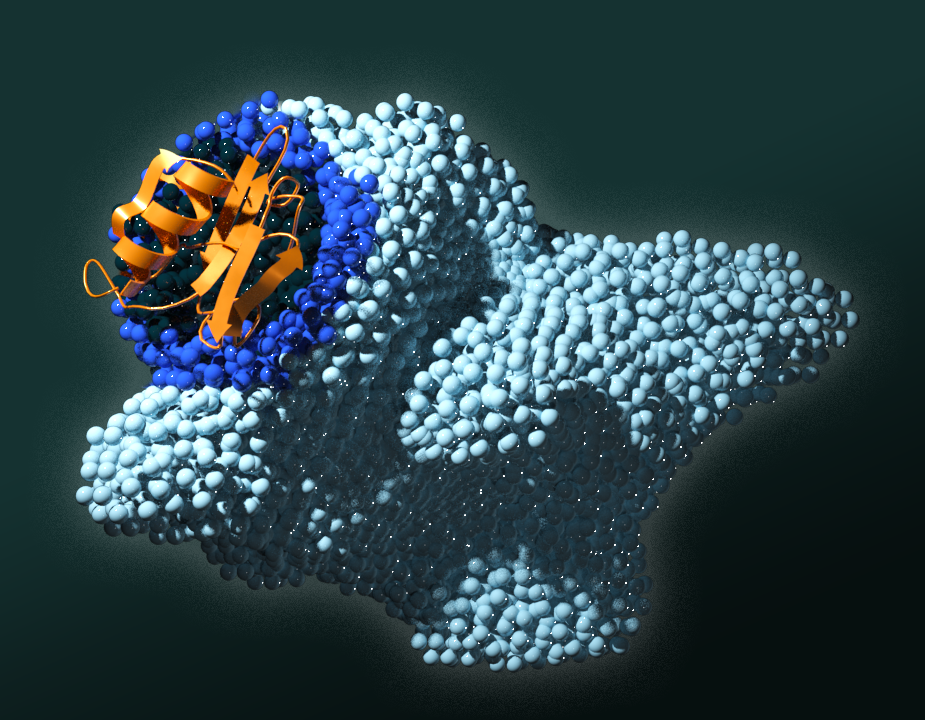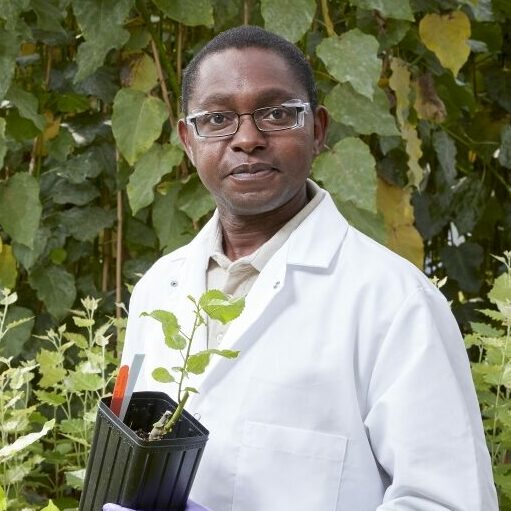Session Info
Methods for Immunoregulation by Modulating Plasminogen-Apple-Nematode Domain (PAN)-Containing Proteins
Problem
The immune response of a cell—whether it be human, plant, fungal, or bacterial—is independent of the general immune system of the organism to which the cell belongs. A specific group of proteins—an immunostimulant—increases or enables the ability of a cell to respond to a foreign entity by binding to the foreign entity, triggering signals that lead to the release of a defensive substance, such as a cytokine, an antibacterial or antiviral substance, or rejecting the foreign entity. However, the presence of an immunoregulatory protein suppresses the ability of a cell to respond. Because of this suppression process, cells do not possess the ability to fight against invasive pathogenic fungi or viruses. This process in host cells allows invasive cancer cells to grow without resistance.

ORNL scientists identified four amino acids key to signaling pathways in the PAN protein domain. Mutating any of those disrupted the signal that tells cancer cells to multiply. Credit: Andy Sproles/ORNL, U.S. Dept. of Energy
Solution
Inactivation of the immunoregulatory protein in a cell increases the likelihood that the cell can respond to a foreign entity. An ORNL team has developed a method for screening for an immunoregulatory protein, which includes assessing the sequence of a candidate protein to determine if it is an immunoregulatory protein when at least one plasminogen-apple-nematode (PAN) domain with a consensus sequence is found. Importantly, four to six cysteine-conserved residues are the signature of the PAN domain. This method will help in determining a therapeutic compound that can target the PAN domain to inactivate the protein. Recent studies show that inactivation of the PAN domain in hepatocyte growth factor inhibits interactions with c-MET — a key receptor in cell development —and ultimately blocks cancer progression. NEUROPILIN1, a receptor of the viral SARS-COV-2 spike protein, also has a PAN domain. The ORNL team successfully demonstrated that inactivating the PAN domain inhibits spike protein binding. Additionally, the team tested whether inactivating a gene that encodes a PAN domain-containing protein in a plant could be used to enhance immune response to a pathogen.
Impact
This new screening method provides a way to modulate immune responses in plants and animals. In human cells, this method can be used to inhibit cellular migration in cancer cells and SARS-Cov-2 viral spike protein binding. This method could be used in creating genetically modified plants that are resistant to pathogenic infections.
Publications
Debjani Pal, Kuntal De, Carly Shanks, Kai Feng, Timothy B. Yates, Jennifer Morrell-Falvey, Russell B. Davidson, Jerry M. Parks, Wellington Muchero. Core cysteine residues in the PAN domain are critical for HGF/c-MET signaling. Communications Biology, Nature.
Mutating novel interaction sites in NRP1 reduces SARS-CoV-2 spike protein internalization. Debjani Pal, Kuntal De, Timothy B. Yates, Jaydeep Kolape, Wellington Muchero, iScience-Cell Press 2023.
The Plasminogen-Apple-Nematode (PAN) domain suppresses JA/ET defense pathways in plants. (Under revision in The Plant Cell). Kuntal De, Debjani Pal, Carly M. Shanks, Kai Feng, Sara S. Jawdy, Mahmudul Hassan, Pradeep K. Prabhakar, Jeong-Yeh Yang, Digantkumar Chapla, Kelley W. Moremen, Breeanna Urbanowicz, Wellington Muchero. (2023).
Intellectual Property
Invention Ref. No. 202004617 and 201804200. US Patent Applic. No. 17/012,139 entitled “Methods for Immunoregulation by Modulating Plasminogen-Apple-Nematode (PAN) Domain-Containing Proteins” filed on September 4, 2020.; EP Patent Applic. No. 20860537; Invention Ref. No. 202205064 “A method to modulate protein ubiquitination, cellular internalization and proteolysis” with US Patent Applic. No. 63/345,591 filed May 25, 2022. Unpublished.
Contact
For more information, please contact Jennifer Caldwell (865-574-4180, caldwelljt@ornl.gov).
